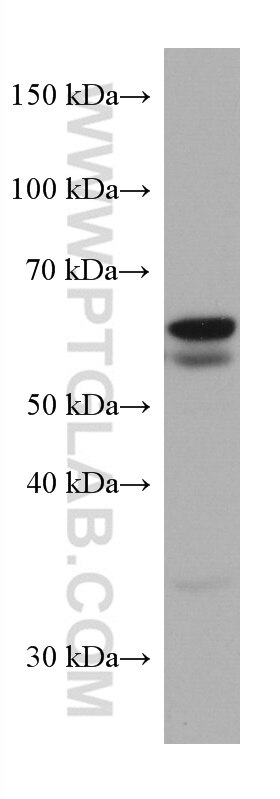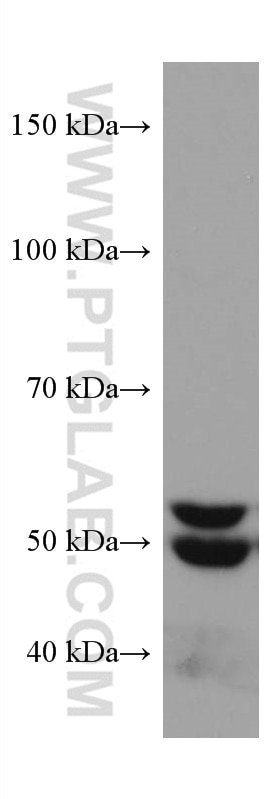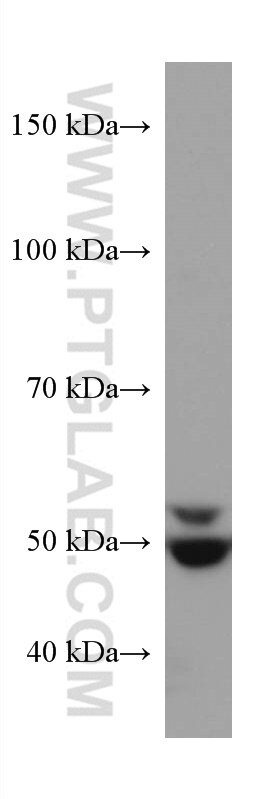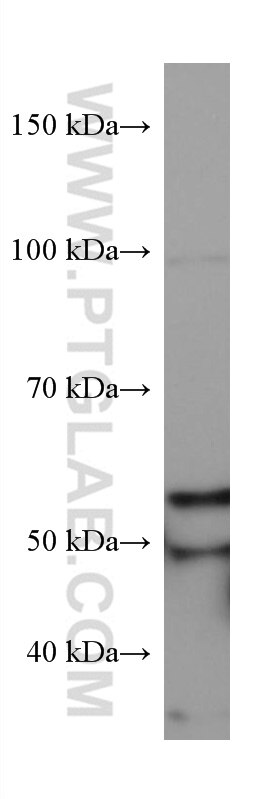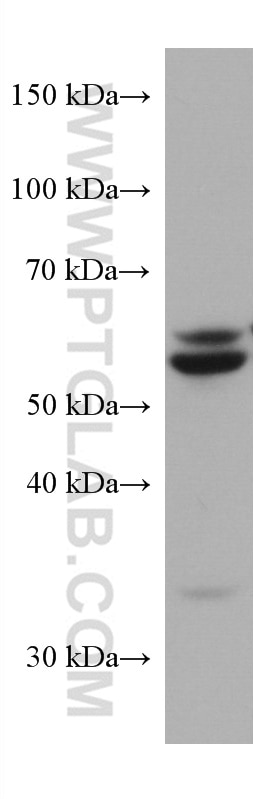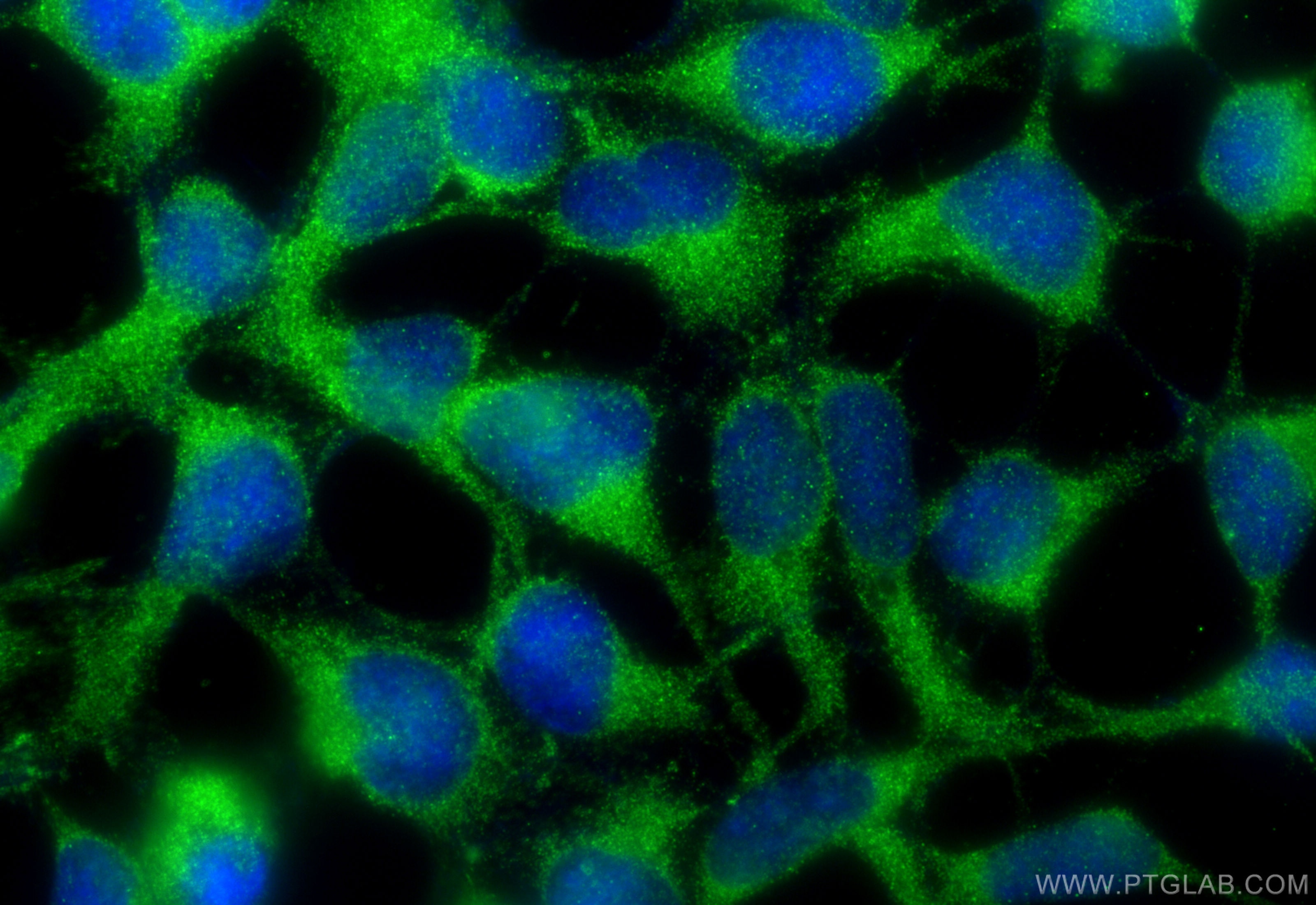- Phare
- Validé par KD/KO
Anticorps Monoclonal anti-SQLE
SQLE Monoclonal Antibody for WB, IF/ICC, ELISA
Hôte / Isotype
Mouse / IgG2a
Réactivité testée
Humain, porc, rat et plus (1)
Applications
WB, IF/ICC, ELISA
Conjugaison
Non conjugué
CloneNo.
1C9A2
N° de cat : 67206-1-Ig
Synonymes
Galerie de données de validation
Applications testées
| Résultats positifs en WB | cellules A549, cellules HEK-293, cellules HepG2, cellules HSC-T6, cellules L02 |
| Résultats positifs en IF/ICC | cellules HEK-293, |
Dilution recommandée
| Application | Dilution |
|---|---|
| Western Blot (WB) | WB : 1:2000-1:10000 |
| Immunofluorescence (IF)/ICC | IF/ICC : 1:400-1:1600 |
| It is recommended that this reagent should be titrated in each testing system to obtain optimal results. | |
| Sample-dependent, check data in validation data gallery | |
Applications publiées
| KD/KO | See 1 publications below |
| WB | See 1 publications below |
| IF | See 1 publications below |
Informations sur le produit
67206-1-Ig cible SQLE dans les applications de WB, IF/ICC, ELISA et montre une réactivité avec des échantillons Humain, porc, rat
| Réactivité | Humain, porc, rat |
| Réactivité citée | souris |
| Hôte / Isotype | Mouse / IgG2a |
| Clonalité | Monoclonal |
| Type | Anticorps |
| Immunogène | SQLE Protéine recombinante Ag3266 |
| Nom complet | squalene epoxidase |
| Masse moléculaire calculée | 574 aa, 64 kDa |
| Poids moléculaire observé | 50-64 kDa |
| Numéro d’acquisition GenBank | BC017033 |
| Symbole du gène | SQLE |
| Identification du gène (NCBI) | 6713 |
| Conjugaison | Non conjugué |
| Forme | Liquide |
| Méthode de purification | Purification par protéine A |
| Tampon de stockage | PBS with 0.02% sodium azide and 50% glycerol |
| Conditions de stockage | Stocker à -20°C. Stable pendant un an après l'expédition. L'aliquotage n'est pas nécessaire pour le stockage à -20oC Les 20ul contiennent 0,1% de BSA. |
Informations générales
SQLE, also named as ERG1, SE and SM, belongs to the squalene monooxygenase family. It catalyzes the first oxygenation step in cholesterol synthesis, acting on squalene before cyclization into the basic steroid structure. SQLE may serve as a flux-controlling enzyme beyond 3-hydroxy-3-methylglutaryl-coenzyme A reductase (HMGR, considered as rate limiting). It is also posttranslationally regulated by cholesterol-dependent proteasomal degradation. SQLE is subject to feedback regulation via cholesterol-induced degradation, which depends on its lipid-sensing N terminal regulatory domain. Truncation of SQLE occurs during its endoplasmic reticulum-associated degradation and requires the proteasome, which partially degrades the SQLE N-terminus and eliminates cholesterol-sensing elements within this region. The MW of SQLE is about 50-64 kDa. (PMID:21356516, PMID: 28972164)
Protocole
| Product Specific Protocols | |
|---|---|
| WB protocol for SQLE antibody 67206-1-Ig | Download protocol |
| IF protocol for SQLE antibody 67206-1-Ig | Download protocol |
| Standard Protocols | |
|---|---|
| Click here to view our Standard Protocols |
Publications
| Species | Application | Title |
|---|---|---|
Adv Sci (Weinh) Targeting Squalene Epoxidase Confers Metabolic Vulnerability and Overcomes Chemoresistance in HNSCC | ||
Cell Signal Knockdown of SQLE promotes CD8+ T cell infiltration in the tumor microenvironment
|
Avis
The reviews below have been submitted by verified Proteintech customers who received an incentive for providing their feedback.
FH Boyan (Verified Customer) (11-24-2022) | Detected a band around the expected molecular weight, but with some other background bands.
|
